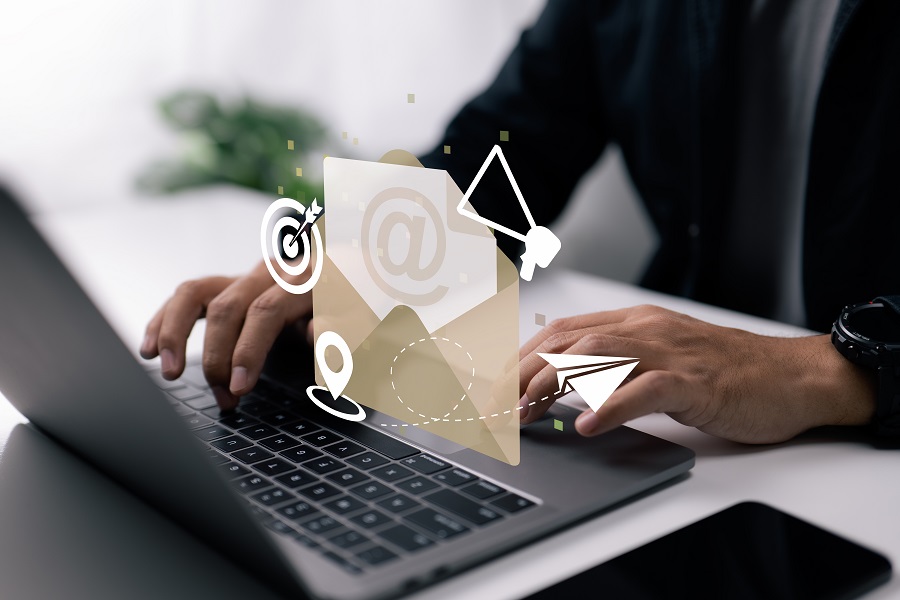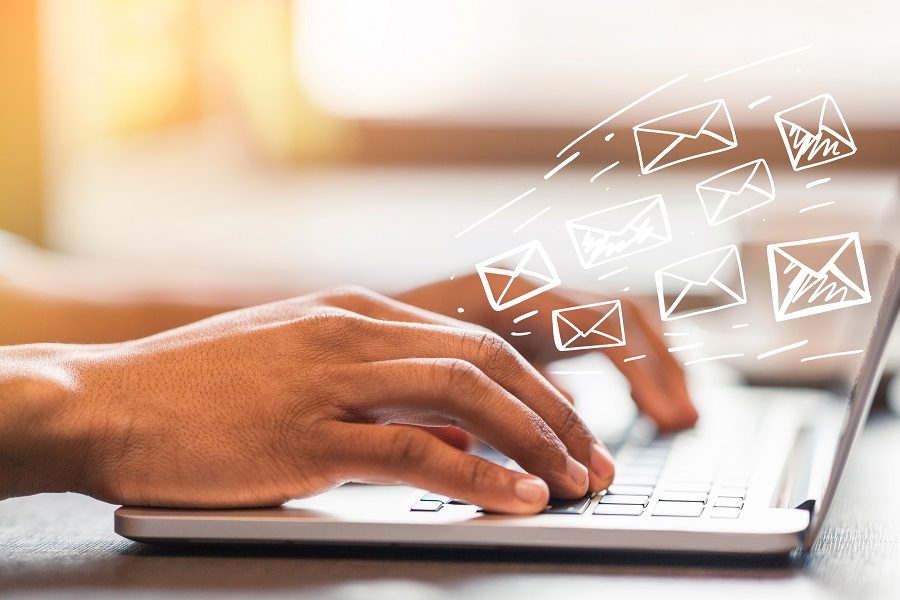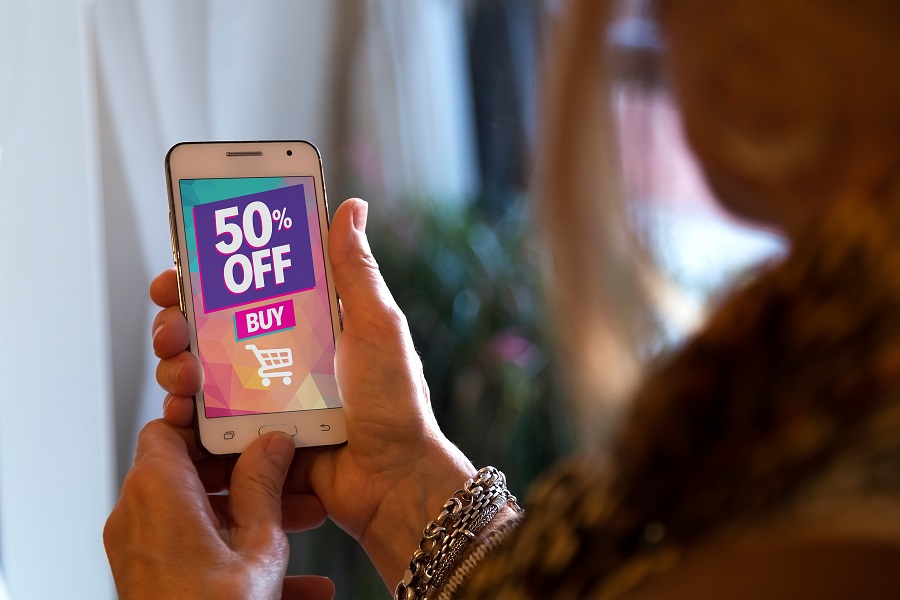20 Mar

Email marketing remains an integral part of any retail marketing strategy in 2024. With an impressive ROI of $42 for every $1 spent, emails help retailers nurture leads, drive sales, win back lapsed customers, and much more.
However, crafting result-driven campaigns is easier said than done. You need to know the email types that work, follow best practices, and avoid common mistakes.
This guide will help you master the art and science of retail email marketing.
Why Do Retailers Need Email Marketing?
Here are some key reasons why emails are a must for every D2C brand and retail store:
Low cost – Sending emails only incurs the cost of designing, writing, and sending them. When compared to other channels like paid ads, retail emails provide the highest ROI.
Owned media – You own the email subscriber list and don’t need to pay rentals like you do for social media platforms. This allows you to market without restrictions.
Personalization – Emails allow hyper-personalization with segments and customer data like order history, allowing 1:1 communication.
Cross-sell & upsells – Tactically promoting best-selling products to different segments helps boost order values.
Win-back lapsed buyers – Email is the best channel to target customers who haven’t shopped in over 90 days with incentives.
Improves brand connection – Regularly engaging customers via email keeps your brand top of mind.
Clearly, email marketing for online retailers and even for brick-and-mortar stores ticks all the boxes when it comes to scalable and measurable promotion. Keep reading to learn how you can maximize success.
How to Get Started With Email Marketing for Retail?
Here are the key steps for planning your retail email strategy:
1. Set Up Your Email Service Provider (ESP)
Dedicated and the best email marketing platforms for retail like Mailchimp, Klaviyo, Omnisend, and Drip make campaigns effortless. We also suggest trying Hana Retail to experience personalized and intelligent interactions with your customers. These providers can help you easily build emails, segment contacts, schedule sends, track opens/clicks, measure conversions, and more.
Most ESPs have free plans for small list sizes and affordable paid upgrades for mature businesses.
2. Grow Your Email List
The larger your subscriber list, the higher your sales potential through email. Some key ways for retailers to collect emails are:
- Email signup pop-ups on your store
- Compelling offers like discounts in exchange for signups
- Social media and influencer collaborations to promote giveaways
- Retargeting visitors who left without subscribing
- Loyalty programs that encourage newsletter join
The key is adding value, and not being overly promotional in your list-building offers.
3. Create Email Segments
Dividing your contacts into segments allows sending targeted emails. For retailers, common segments are:
New subscribers – Welcome series educating about your brand
Abandoned cart – Win back customers who didn’t checkout
Top customers – VIP segment who spend the most
Lapsed buyers – Incentivize those with no purchase in 6+ months
Product category interest – Match customer affinities
Keep expanding your segments as your list grows.
4. Map Out an Editorial Calendar
An editorial calendar entails planning what email types you’ll send each week and month. This stops ad-hoc campaigns and drives more sales.
For instance, you can send:
- Welcome series for subscriber onboarding
- Abandoned cart emails weekly
- Customer win-back series monthly
- Seasonal and holiday campaigns
- New product launches and stock updates
- Retention campaigns with coupons, loyalty rewards, etc.
Now let’s examine the best-performing retail email types with examples.
Types of Emails Used by Top Retailers

Here are the proven templates and retail strategy examples you can model for your store emails:
1. Welcome Series
These intro emails educate new subscribers about your products, services, rewards program, etc.
Send a series of 4-5 emails over 7-10 days welcoming them. Offer an instant 10-15% off coupon too.
2. Abandoned Cart
Customers don’t always complete purchases in one session. Send a series of 3-4 emails over 5-7 days with incentives to remind them.
Offer free shipping, discount codes, payment plan options, etc. based on cart value.
3. Browse Abandonment
Many visitors browse products but leave. Retarget them if they don’t purchase in 24-48 hours with special offers.
4. Win-Back Lapsed Customers
Segment buyers with no repeat purchase in 90+ days. Send personalized emails checking in and offering 15-20% off coupons or free gifts to purchase again.
5. Birthday Offers
Use CRM data to delight contacts on their birthdays with special discounts or freebies.
6. Loyalty Rewards
For retailers running loyalty programs, send email updates when:
- Customers unlock new tiers
- Their points are expiring
- New items are available for redemption
This encourages members to engage more with your brand and redeem perks.
7. New Product Launches
Notify customers about new arrivals relevant to their interests. Share details of the products alongside influencer reviews, press coverage, etc.
8. Back In Stock Notifications
If a sought-after product is sold out, allow signups for stock notifications. When it’s available again, email subscribers instantly to buy first.
9. Cart Incentives
A common practice is showing discounted prices or bundled offers when a product is added to the cart.
Follow up via email reminding prospects of incentives if they check out items saved in their cart.
10. Seasonal Offers
Partner with other retail brands to promote gift ideas or discounts for seasonal events customers care about.
Examples are Mother’s Day, Christmas, Black Friday, or product category days like National Coffee Day for cafes selling brewing equipment.
11. Customer Winback
Use this when you notice a regular shopper hasn’t made a purchase in over 90 days unexpectedly. Check in with a personalized email and offer to entice them to buy again.
12. Customer Re-engagement
Schedule recurring emails to casual shoppers who’ve purchased only once or have low order values. Recommend products relating to their last category interest with incentives.
The goal is to nurture one-time buyers into repeat customers.
Also Read: Types of Emails Retail Customers Love Getting
These examples represent the primary email types for engaging both existing and lapsed customers. Now let’s cover common mistakes to avoid.
Things to Avoid for Best eCommerce Email Marketing
While sending effective campaigns seems straightforward, many retailers commit errors hampering engagement and sales.

Here are key email marketing mistakes to steer clear of:
Aggressive Sales Promotions
Avoid sounding overly promotional or sales in each email. Write educating and helpful copy guiding readers rather than force-feeding products continually.
Irrelevant Content
Generic inbox spamming leads to unsubscribes quickly. Ensure you only send emails matching member interests so the content is welcomed.
Also Read: Is Email Marketing Effective for Customer Retention?
Not Personalizing
Using names and data personalization is table stakes in 2024. Leverage your CRM and ESP to incorporate transaction history and behavior to make each email resonate.
Overwhelming Length
From subject lines to body copy – be crisp and concise. Use email preheaders, short paragraphs, bullet points, and images optimally without diluting core messaging.
Ignoring Insights
Carefully monitor campaign metrics like open, click-through and conversion rates benchmarked to your industry. If some email types underperform, tweak them using learnings from past successes.
Not Proofreading
Typos, incorrect links, and presentation errors portray unprofessionalism and loss of subscriber faith. Design clean templates and thoroughly proofread copy and test links before final sends.
Unsolicited Emails
Never arbitrarily add contacts without consent or send irrelevant one-size-fits-all blasts. This tanks the sender’s reputation, deliverability, and opt-outs.
Stay clear of these missteps, follow email best practices and customers will eagerly await your mailbox gems!
Using an integrated point of sale (POS) system like Hana Retail to further enhance your retail email strategy. The POS System with email marketing intact seamlessly syncs all transaction data into customizable CRM profiles for hyper-personalized email targeting. Sign up FREE today!





